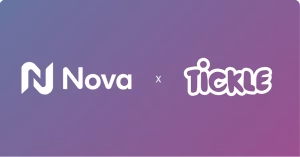by Dr. Alicia Frame, Director of Product Management – Data Science at Neo4j
Online marketers and advertisers rely on cookies to collect user data, track website visitors, target ads to specific audiences, and improve the user experience. Cookies are, in fact, a great tool, and their use has become widespread. This highly useful functionality is being removed as a marketing option, however —presenting this industry with a real headache.
The software in question collects marketing-relevant data (namely: age, location, gender, or user behaviour). When visiting a website, these so-called third-party cookies track and gather information on the user so a brand gets an overall vision of the user’s online behaviour (such as frequently visited websites, types of purchases, time spent on specific pages, etc.).
Google’s decision to now phase out the third-party cookie in the mid-2023 to late 2023 timeframe, means advertisers have to adjust to a cookie-free Internet, and figure out how to engage customers, build relationships and drive growth. Right now, marketers rely on data collected through third-party cookies for online marketing and advertising, pop-up ads, or online audience targeting strategies. Amazon taught capitalism the value of being able to predict what customers want to buy by analyzing online sales data. And cookie-based profiles mean brands can maximize the value they deliver, secure customer loyalty, and sell more effectively.
However, there is light on the cookie-less horizon. Graph database technology is being used to build high-functioning recommendation engines that don’t rely on third-party cookies. To make real-time recommendations, you need to instantly capture any new interests shown in the customer’s current visit. Making all the real-time data connections required is easily achieved with a graph database.
And these recommendation engines can make use of web logs to offer the customer insight advertisers are reliant on – and arguably more. Their use could significantly rise in the next couple of years as Google changes tack.
The power of connections
Let’s be clear, graph databases are not a like-for-like swap for cookies, but they’re another route to great, reliable “knowing your customer” insight. They are a well-proven technology for enabling real-time recommendations. eBay uses graph databases for this purpose, and judges that they are highly efficient: “We found graph technology to be literally thousands of times faster than our prior MySQL solution, with queries that require 10-100 times less code. Graph provides eBay with functionality that was previously impossible.” A software developer at a leading global retailer adds, “Graphs help us to understand our online shoppers’ behavior and the relationship between our customers and products, providing a perfect tool for real-time product recommendations.”
Consider US-based Meredith Corporation, a $3bn media conglomerate working for major US consumer brands with digital presences that reach over 180 million users a month. Meredith generates customer insight using graph technology rather than third-party tracking data, to build unique customer profiles.
Historically, Meredith identified anonymous users through third-party cookies, but cookie loss across diverse devices and ITP 2.3 browsers that block cookies by default was already increasing the difficulty of relying on them well before the Google announcement. That led to inefficiency, while the fact that IP addresses change constantly meant that the data could be unreliable (at least in terms of individual identity).
Meredith’s Senior Data Scientist Ben Squire comments: “If the cookie ID used in the models doesn’t appear again, then the money, time and effort that goes into building those models is lost. Knowing your audience is not good enough; you need to see them again in order to act upon it.”
As a result, Meredith overhauled its approach. The firm has a rich mix of media content that generates multiple, disparate streams of data, so its internal data scientists started to blend that data to find ways to identify users across those streams. An interesting fact jumped out: pattern matching, showing that cookies designed to identify unique users were repeated across different data streams.
Sparked by this insight, Squire and his team built a graph database based on more than 20 months of user data from first- and third-party sources. By de-anonymizing data on a large scale (in the hundreds of millions of users and using a graph database to find relationships between the cookie and the other streams of data, Meredith has completely revolutionized its understanding of customer behavior: “We have increased our understanding of a customer by 20 to 30% by looking at how the data connects over time, rather than just looking at individual cookies themselves. So instead of ‘advertising in the dark,’ we now better understand our customers, which translates into significant revenue gains and better-
served consumers.” A richly detailed view of user interests and preferences leads to more relevant personalized content and advertising and more users returning over time.
Although the end of cookies entails some big changes underway, leveraging data connections and joining the dots between the relationships can offer a potential solution. And using a graph platform is your easiest and most scalable way of doing just that.











